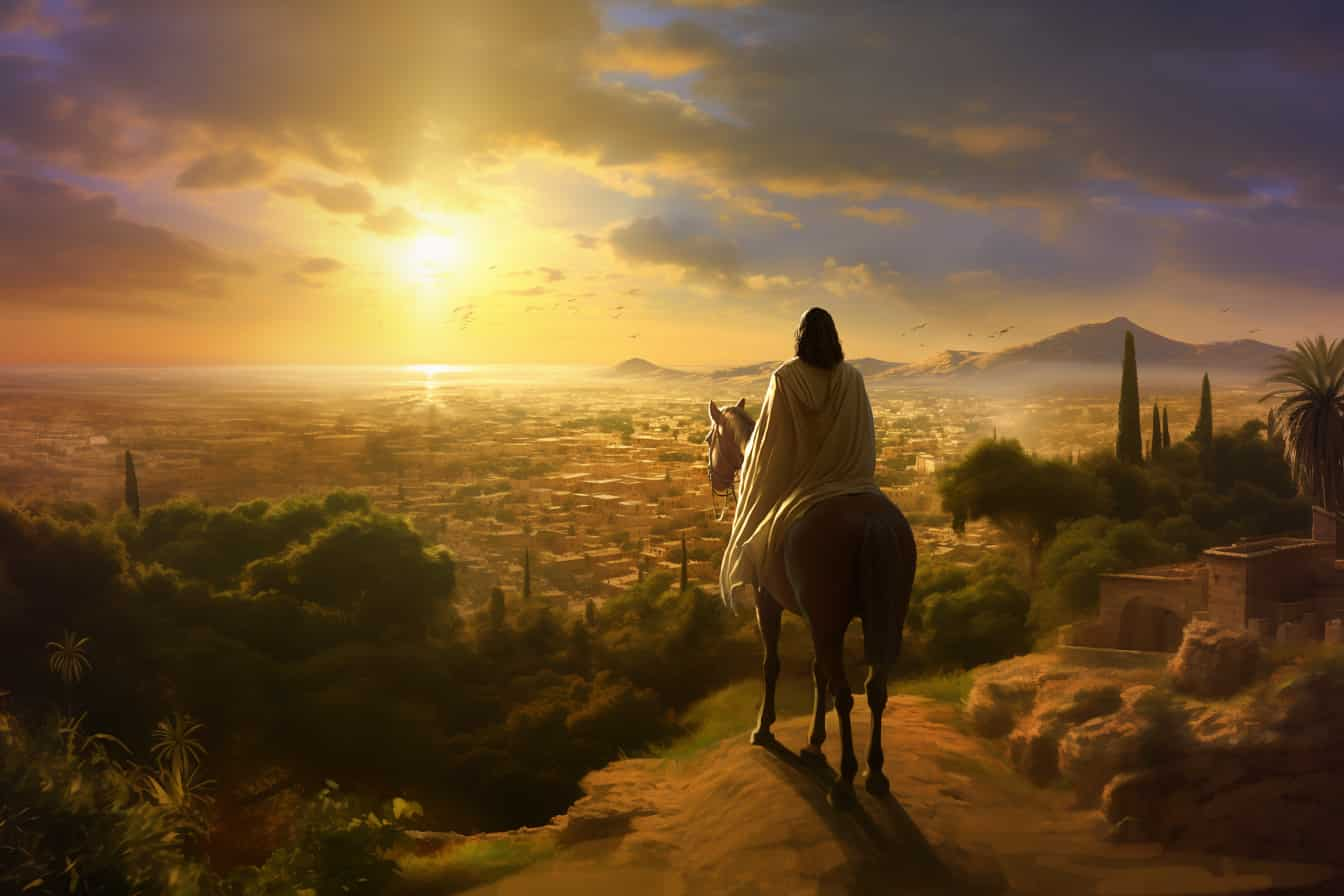Discover Jesus \ Topic \Why Did Jesus Make a Triumphal Entry Into Jerusalem?
Tag
Why Did Jesus Make a Triumphal Entry Into Jerusalem?
Jesus entered Jerusalem leveraging his popularity to avoid arrest by the cautious Sanhedrin, who feared the curious crowd. His entry, marked by riding a donkey, symbolized peace, countering expectations of a militant messiah with his mission's spiritual nature.

Table of Contents
Summary
Jesus utilized his popularity among the people to enter Jerusalem unmolested by the Sanhedrin, who preferred to operate discreetly and avoid public scrutiny. The religious authorities feared the crowd, who were mainly curious about Jesus, allowing him to enter the city freely without immediate arrest. This momentous entry was not merely about physical presence in Jerusalem but represented a critical teaching moment about the spiritual essence of his mission. Jesus' choice of a donkey instead of a warhorse underscored his message of peace over the traditional Jewish expectations of a militant messiah.
Jesus Ponders His Entrance into Jerusalem
Entering a neighboring city typically poses no issue, but when there's a threat of arrest and execution, the stakes are higher. This was Jesus' reality when he resolved to enter Jerusalem. Conventionally, one might avoid the city or enter forcefully. Yet, Jesus, a man of peace, sought a non-violent approach.
All morning, Jesus pondered how to confront his enemies openly, despite understanding the potential deadly outcome. He saw this as an opportunity to give his adversaries one last chance to see his message of peace. By leveraging the popular support of the crowd and his followers' enthusiasm, he could prevent the Sanhedrin from capturing him, as it might incite public backlash.
Jesus did not choose to publicly enter Jerusalem as a last attempt to gain popularity or as a final attempt to seize power. He did not do it solely to fulfill the desires of his disciples and apostles. Jesus harbored no delusions of a fantastic dreamer; he was acutely aware of the inevitable consequences of this visit.
The Manner of Entry
The question then became how to enter. Should he stride in boldly with his apostles in tow, possibly armed? Or should he ride a white steed like Caesar returning from victory, which could align him with messianic prophecies he sought to contradict? Instead, he chose to fulfill the role of a peaceful king as prophesied by Zechariah: a just ruler bringing salvation, humbly riding on a donkey. This act would clearly symbolize that his kingdom was not of this world but of the spiritual realm within each individual's soul.
Jesus had persistently taught his apostles and disciples that his kingdom was spiritual and not of this world, but he struggled to make them understand this fully through direct teaching. In an attempt to convey this message symbolically, Jesus instructed Peter and John to retrieve a colt from Bethpage after lunch, telling them to respond to any inquiries by saying, "The Master has need of him." When confronted by the colt’s owner, they explained their purpose, and the owner, recognizing Jesus's authority, willingly allowed them to take the colt.
"Topic - Why did Jesus make a triumphal entry into Jerusalem?" - by Midjourney and Gary Tonge
The Fateful Procession to Jerusalem
As Jesus and his apostles departed, the anticipation of Passover had already attracted hundreds of pilgrims who, stirred by reports of Jesus’ imminent triumphal entry, lingered to join him. The fervor was fueled by David Zebedee and his associates who, ahead of Jesus’ arrival, propagated the news in Jerusalem, drawing out thousands to witness and partake in this event. The convergence of these enthusiastic crowds from Jerusalem with Jesus' entourage near Olivet created a spectacle, celebrating what they perceived as the advent of a prophesied Messiah, marked by the symbolic act of Jesus riding a donkey.
The procession was a jubilant affair with disciples, believers, and pilgrims from various regions, waving palm branches and laying garments as carpets, singing psalms of blessing and messianic hope. However, Jesus' response upon seeing Jerusalem from Olivet was one of profound sorrow, foretelling the dire consequences of the city's spiritual blindness and imminent rejection of peace. The public's reaction was mixed; while some celebrated, Pharisees and skeptics criticized and feared the uproar might incite revolt, underscoring the transient and superficial nature of the crowd's support, which would dramatically shift by the week's end.
Suggested Reading from this Essay

Timeline
30 CE
Related People
Jesus
Son of God, Son of Man. Creator Son of the Universe.
The Twelve Apostles
The chosen followers of Jesus.
Related Locations
Jerusalem
Center of many pivotal moments in Jesus’ life.
Contributors
Gregg Tomusko, Mike Robinson, Gary Tonge
